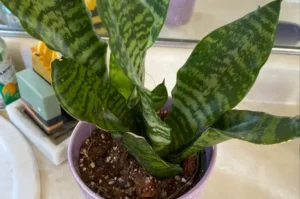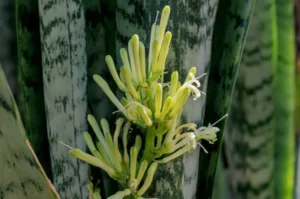Snake plants, also known as Sansevieria, are loved by many plant owners for being tough and easy to care for. But a common question people often ask is: Do snake plants have roots? Yes, they do and their roots are quite special.
In this article, we’ll explain what kind of roots snake plants have, how they work, and how to keep them healthy. Whether you’re new to gardening or have grown snake plants before, understanding their roots is important for proper care.
Do Snake Plants Really Have Roots?
Yes, snake plants have roots just like other plants. Their roots grow underground and play a key role in keeping the plant strong. They help absorb water and nutrients and hold the plant firmly in the soil.
What makes snake plant roots unique is that they don’t grow very deep. Instead, they spread out close to the surface. That’s why snake plants can grow well even in small pots.
Types of Roots in Snake Plants
Snake plants have two main types of roots:
1. Fibrous Roots
These are thin, hair-like roots that grow outward from the plant base. Their job is to take in water and nutrients from the soil. These roots are delicate but important for the plant’s daily needs.
2. Rhizomes
Rhizomes are thick, underground stems that grow sideways. They help the plant spread and store water and energy. Rhizomes can also grow into new plants. This is one reason why snake plants are easy to multiply at home.
How Deep and Wide Do Snake Plant Roots Grow?
Snake plant roots don’t grow very deep, usually only a few inches down. However, the rhizomes can stretch out wide, which is why snake plants often outgrow their pots.
When you see the roots poking out of the drainage holes or circling the inside of the pot, it’s time to repot the plant.
Common Snake Plant Root Problems
Even though snake plants are hardy, their roots can still run into trouble. Here are some problems to watch out for:
1. Root Rot
Too much water is the most common cause of root rot. If the roots stay wet for too long, they become soft, dark, and smelly.
How to Fix It:
- Let the soil dry out before watering again.
- Always use pots with drainage holes.
- Use fast-draining soil (like cactus mix).
2. Root Bound
This happens when the roots have no more space to grow. They become tightly packed in the pot, which can slow the plant’s growth.
What to Do:
- Repot your snake plant every 2–3 years.
- Choose a pot that is 1–2 inches wider than the current one.
How to Check the Roots of Your Snake Plant
To inspect the roots, gently take the plant out of its pot. Look for the following:
- Healthy Roots: Firm, white, or light-colored
- Unhealthy Roots: Mushy, black, or foul-smelling
If the roots look unhealthy, cut off the damaged parts with clean scissors and repot the plant in fresh soil.
Can Snake Plants Be Grown From Roots?
Yes, snake plants can grow from their roots, especially from the rhizomes. This is a simple way to propagate the plant.
How to Propagate Using Roots:
- Take the plant out of the pot.
- Use a clean knife to cut a section of rhizome with at least one leaf.
- Plant it in new soil.
- Water lightly and place in indirect sunlight.
Over time, the root section will grow into a full plant.
Best Soil for Snake Plant Roots
Snake plant roots do best in soil that drains well. If the soil holds too much water, the roots can rot.
Best Soil Mix:
- 2 parts cactus or succulent soil
- 1 part perlite or coarse sand
Avoid using regular potting soil alone, as it may stay too wet for too long.
Frequently Asked Questions (FAQs):
Do snake plants grow roots in water?
Yes, especially when you’re propagating a cutting. However, it’s best to move them to soil once roots develop to avoid rot.
Can snake plant roots break pots?
If the rhizomes grow too large and strong, they can push against the pot and cause it to crack. That’s why repotting is important.
How often should I check the roots?
Check the roots if you notice signs of rot, yellow leaves, or if the plant has stopped growing. Otherwise, inspect them once a year during repotting.
Conclusion
So, do snake plants have roots? Absolutely and they’re essential for the plant’s health and survival. From fibrous roots that absorb nutrients to thick rhizomes that store energy and help with propagation, the root system is a vital part of this hardy houseplant.
Understanding how snake plant roots grow and how to care for them will help your plant live longer and stay healthy. With the right soil, proper watering, and timely repotting, your snake plant’s roots will stay strong and support beautiful growth above the soil.






